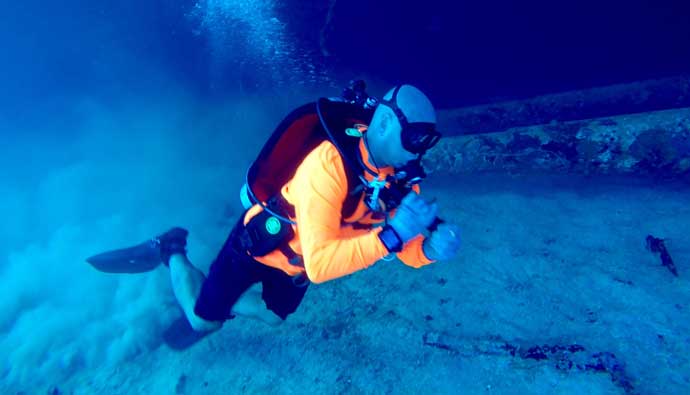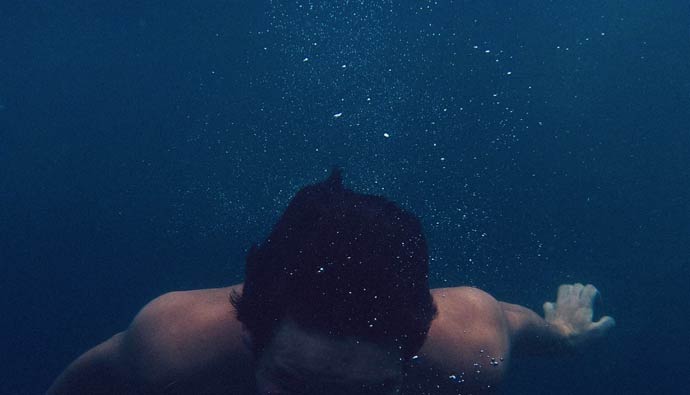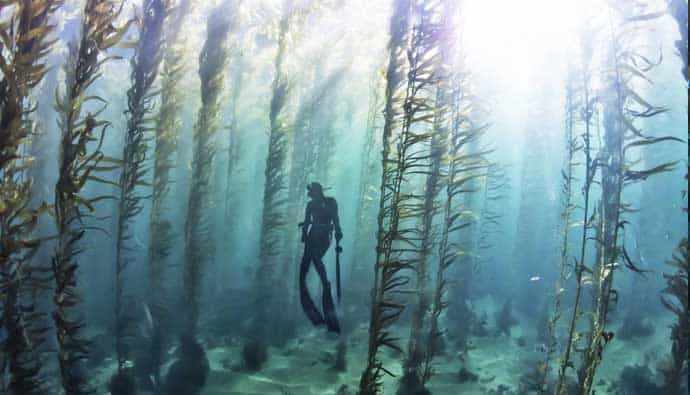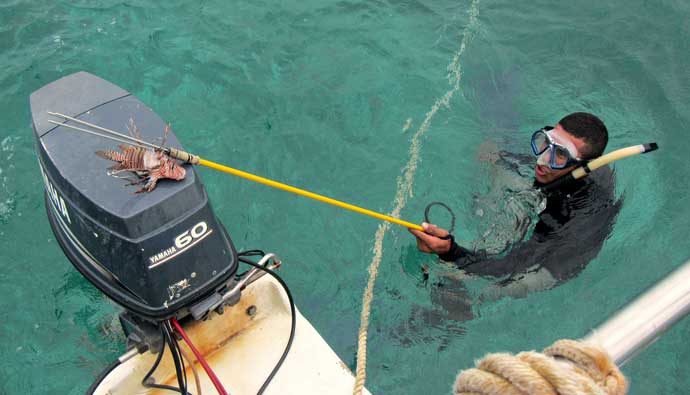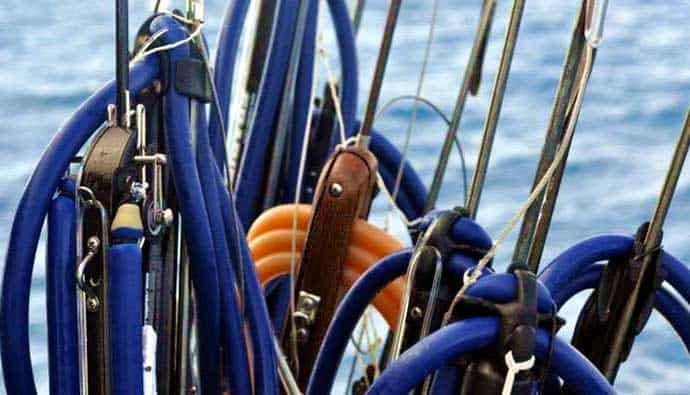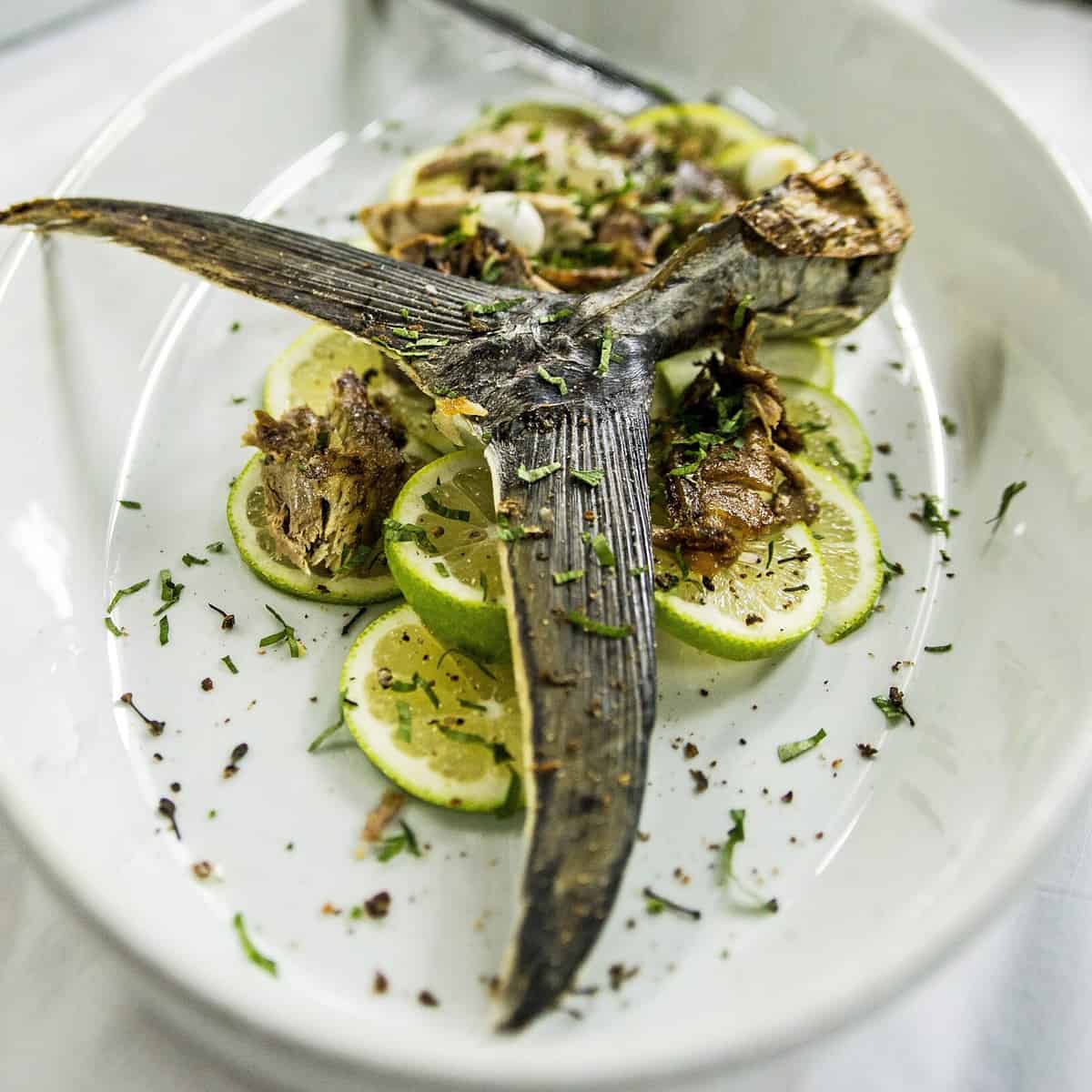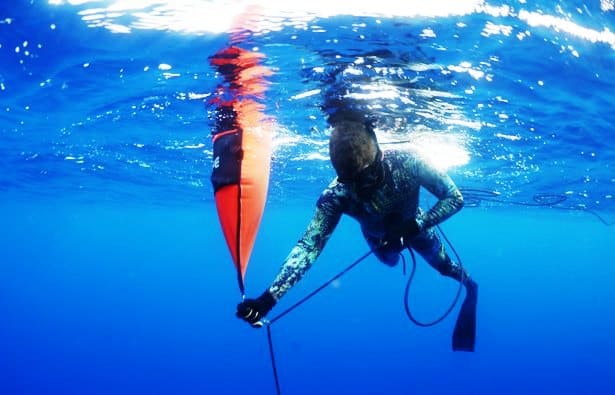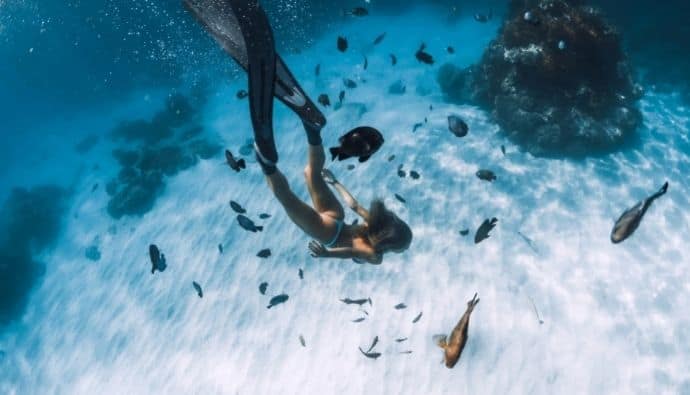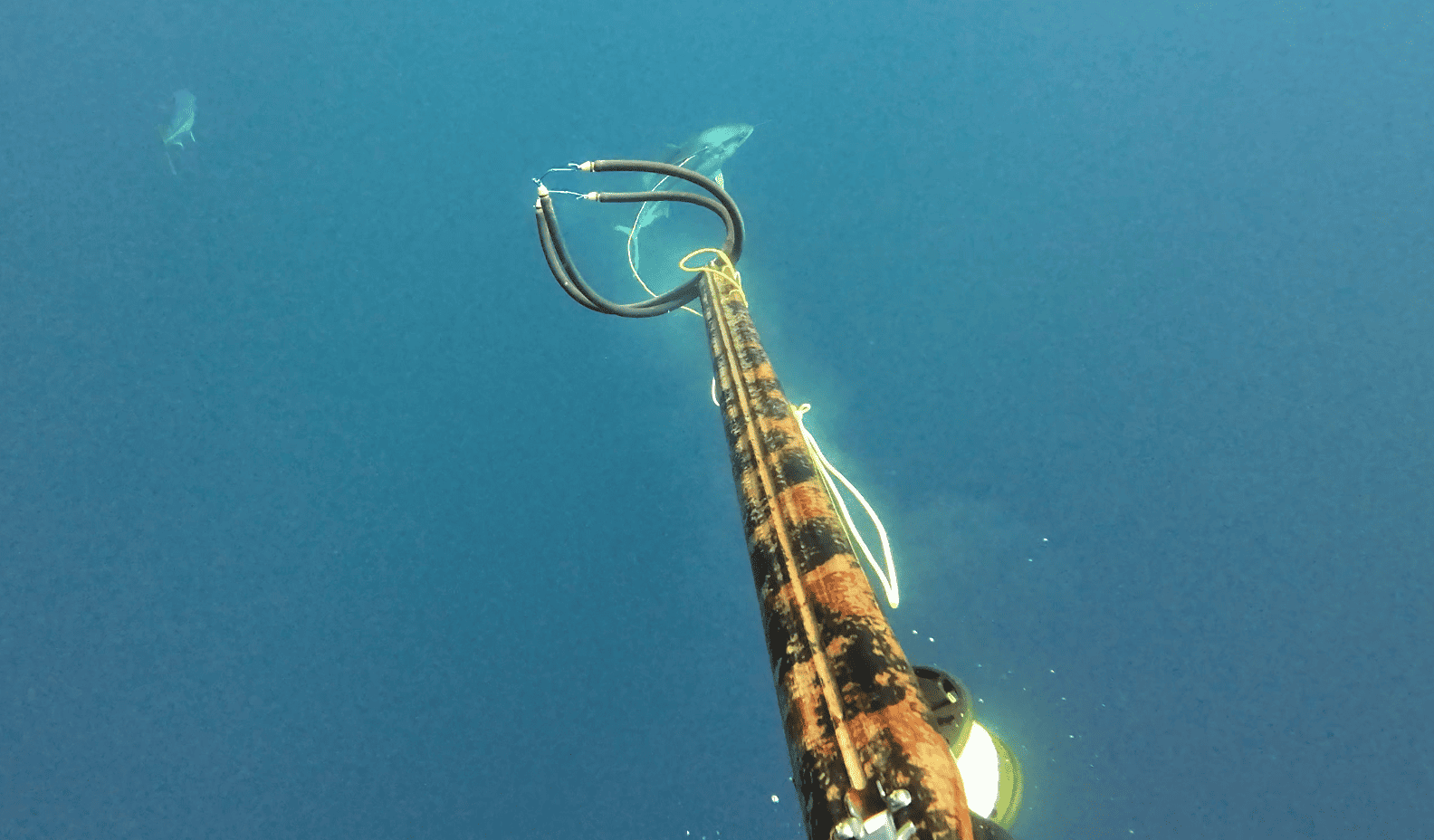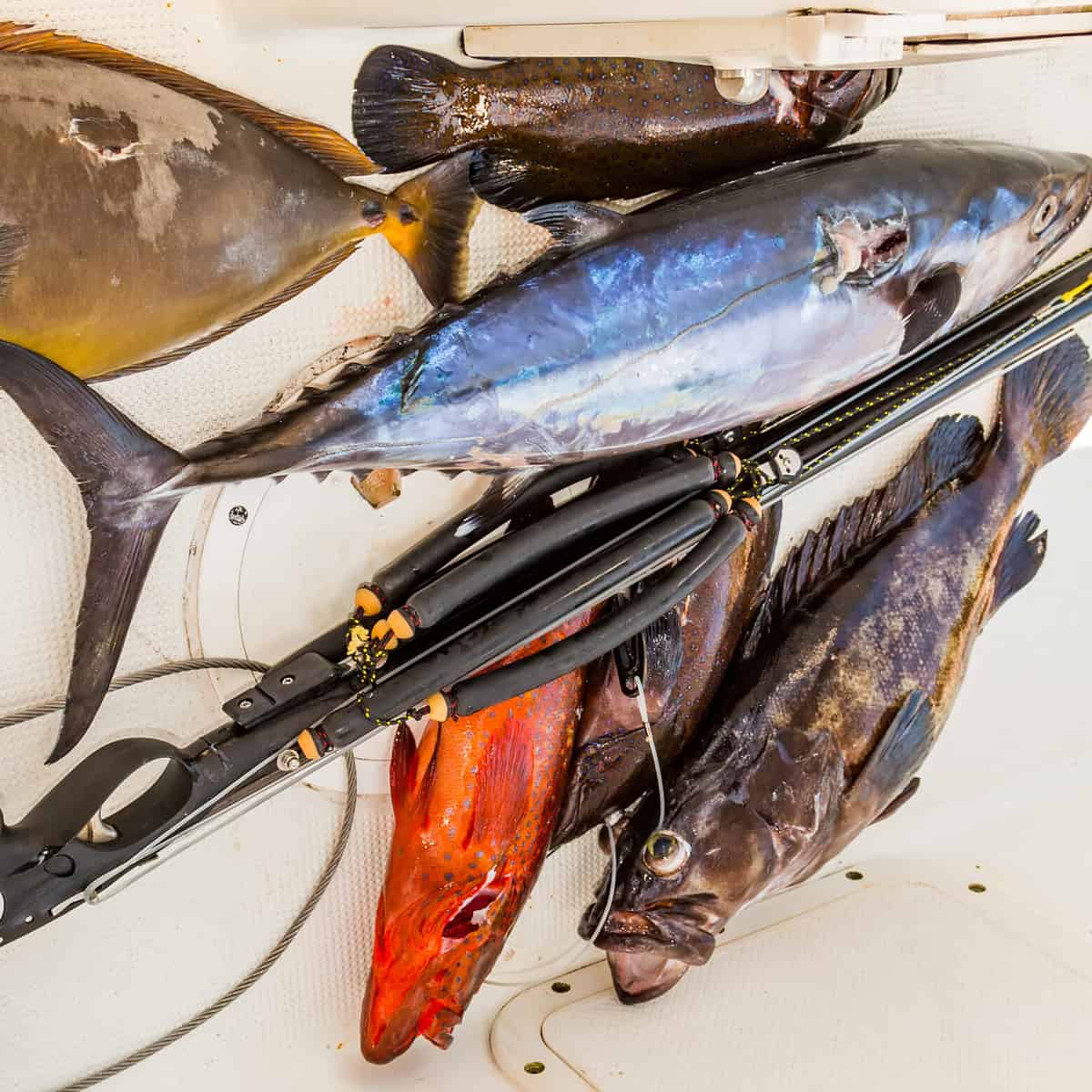Spearfishing has been a known sport for centuries. It’s a slightly different way to catch fish. Some say it requires less effort, and some say it is more complicated. However the case may be, your technique and your gear will ultimately dictate your experience.
This article will discuss effective tips on how to spearfish better. I will also explain the most basic gears you need before you head into the waters.
Listen to more Scuba Spearfishing Gear & Tips on the Cast & Spear Podcast
What is Scuba Spearfishing?
As the name implies, it is a type of breath-hold spearfishing that uses a spear to hunt. In ancient times, spearfishing was only done in shallow water like rivers, streams, and coral reefs. They use some sort of sharpened sticks for hunting for food, like fish.
However, in more recent times, with the augmentation of diving (whether freediving or snorkeling), spearfishing can be done by divers in deeper waters as well.
Spearfishing is also considered the most eco-friendly way to catch some fish. Since you can only catch one fish at a time, fish populations are not gravely affected. Also, less fishing debris or waste is left behind.
Scuba spearfishing, specifically, uses more technologically advanced gear. A speargun is used instead of a more traditional spear. Also, scuba equipment like tanks and fins are required to do it. Spearfishing with scuba gear is the modern way to do it.
Scuba Spearfishing Tips
Since we have already covered the basics of scuba gear and spearfishing gear, below are some tips shared by Captain Ben Choi.
1. On Commercial Muzzles
Backload the shaft through the closed muzzle from behind, then let the shaft slide back into the gun. This way, it is a lot faster to reload your speargun than threading the shaft manually into the hole of the closed muzzle.
2. Invest in High-End Gear
High-end scuba gear, although more expensive than the standard ones, offers better efficiency and comfort for the diver. Usually, this top-of-the-line equipment are more durable and has more features than regular ones.
If you are serious about it, you should invest in high-end gear. They will last longer and make your diving life a lot easier and more comfortable. Even recreational divers sometimes get high-end ones for a better experience.
3. Use Freediving Fins
This came from Captain Choi, who has a freediving background. Plastic-free dive fins can give much more power when chasing fish. They are longer and usually a lot more flexible. One of the essential scuba gear.
4. Quick Release
A quick-release is a slide ring that goes over your flapper that helps you attach your catch after shooting your target. As per Captain Choi, using a quick-release scuba gear sounds like a good idea and is not as realistic as it seems.
Even the pros would take at least 10 seconds to rig everything up properly. By then, the fish had already swum away into safety.
Listen to more Scuba Spearfishing Gear & Tips on the Cast & Spear Podcast
Why It’s Often Prohibited?
There are a lot of arguments surrounding spearfishing. It is even illegal in many countries. The main reason behind it is that they deem that the method is gravely unfair to the prey.
A lot of times, the diver will hunt the largest fish. However, some experts say that the larger fish species usually carry more eggs than smaller ones. Thus, killing one would lessen the reproduction of fish indirectly. Another example is that some big male fishes guard their eggs. When they get killed, it is also likely for the eggs to get killed by other predators like sharks. Thus, more fish species are put in danger.
Lastly, some people frown upon scuba spearfishing because of the diver’s ability to go deeper into the ocean. When fishing, especially in coral reefs, the deep waters are a fish species’ safe haven. They usually go deeper to avoid being caught.
So, if deeper dives are more possible, this will leave the fish no more room to escape. Thus, going back to what I mentioned earlier, giving them an unfair advantage.
Spearfishing is still more sustainable than other forms of fishing. When done in a thoughtful manner, scuba spearfishing is a useful tool for the selective harvest of fish.
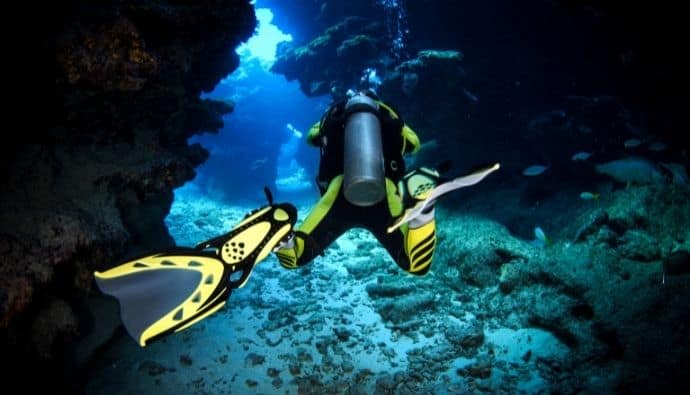
Scuba Spearfishing Gear
With that being said, let me discuss some of the essentials when spearfishing with scuba gear. These are the tools you will need to get that catch of the day successfully.
Also indicated are some tips and advice from Captain Ben Choi, an expert angler and a friend of mine.
Free Shafting
This is when you don’t have a line connection on your spear shaft. The most basic kind usually is 48 to 60 inches long. The type of free shaft to use will mainly depend on what and where you are hunting. If you’re after a big fish or a specific species, you should get the biggest and sturdiest one there is.
Captain Choi advised that you get the standard ones, especially if you are a beginner, as shafts can be easily lost after a shot. So, getting expensive free shafts could hurt your wallet if you lose them frequently.
Speargun
A speargun is your weapon for hunting. It will be the one launching your free shaft into the water using high pressure. Here are some important factors to consider when getting a speargun:
- Grip – you should be able to hold your gun comfortably
- Length – depending on the environment and your objective, you may choose from a short barrel or long barrel.
- Muzzle – spearguns are either open or close muzzled. Open muzzles are easier to reload, while closed muzzles offer better stability from recoil.
- Type – Sling or pneumatic. A sling can be considered as the manual type, where a rubber bungee throws the shaft. In contrast, pneumatic uses air pressure to propel the shaft.
Tip! Read our article on the best spearfishing gun to help you choose the right one for you.
BCD or Buoyancy Control Device
BCD gives you the ability to control your buoyancy. This scuba gear helps with the weight distribution of a diver. You won’t need a weight belt anymore if you are wearing a BCD.
A suitable BCD gives scuba divers more freedom and comfort to move underwater. Captain Choi suggests that you wear the less poofy, low-profile BCD or BCS to avoid much drag so that you can chase down fish a lot easier (and faster).
Tanks: Steel vs. Aluminum
Tanks provide scuba divers with oxygen. In a way, it eliminates the breath-hold method. It is a scuba gear that allows you to stay underwater for longer periods.
Traditional methods don’t use tanks, for they are only free diving or snorkeling. However, scuba diving requires a diver to go deeper and longer in the water. Tanks give you that opportunity.
But the question is, which one should you get, steel or aluminum? The main and probably the only differences between the two are their weights and capacity. Aluminum tanks are heavier. Steel tanks usually carry more air. How you choose between them will depend on your comfort and availability.
Masks
A good scuba gear mask will provide the diver with clear vision underwater. You may opt for a low-profile mask that will fit your face correctly without compromising comfort. Clear lenses are better for clear waters. Colored lenses can be used for murkier waters.
Fins
Spearfishing fins are longer and more flexible than regular scuba diving fins so that spearfishers could go deeper into the waters. This scuba gear gives the diver the ability to maneuver underwater better with less exerted effort and energy.
Standard or basic fins are usually made of plastic. Newer models are made with fiberglass and carbon materials, making them a bit more expensive than the usual scuba gear.
Dive Computer
It is a device that a scuba diver uses, usually a watch, that monitors the time and depth of dives. It calculates your decompression levels so you would know when you need to ascend.
Captain Choi confidently recommends any Shearwater products if you are looking for a reliable dive computer. Spearfishing with scuba gear like this can work so much to your advantage.




 Facebook
Facebook YouTube
YouTube